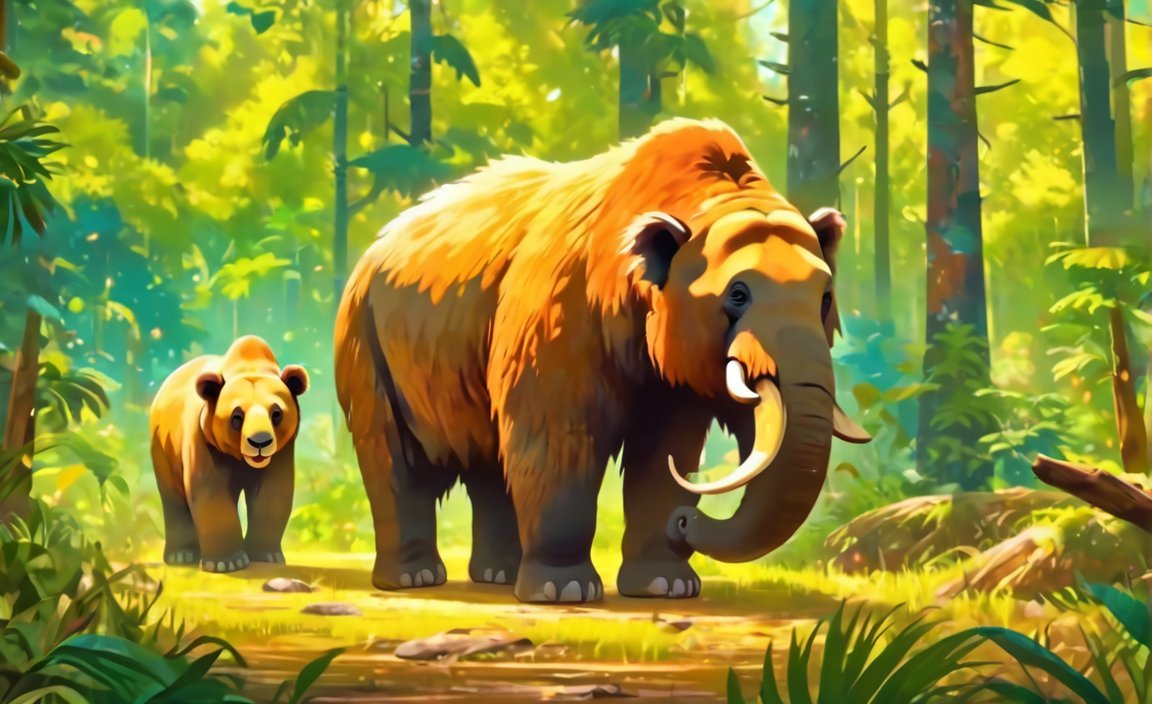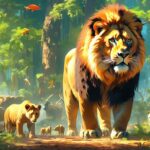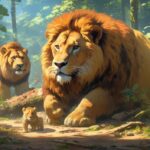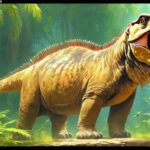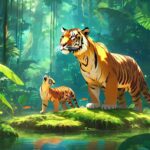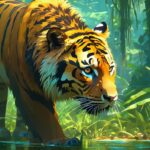Deforestation’s Devastating Impact on Animal Extinction
As deforestation continues to ravage our planet, the consequences on wildlife are becoming increasingly dire. Countless animal species have fallen victim to this destructive practice, with extinction looming over their populations. The catastrophic link between deforestation and animal extinction is a pressing issue that demands immediate attention. In this article, we delve into the alarming trend of how deforestation is driving the loss of unique and irreplaceable species, highlighting the urgent need for action to protect our planet’s biodiversity.
Key Takeaways:
- Deforestation has resulted in the extinction or near-extinction of various animal species.
- Notable examples include the Formosan Clouded Leopard, Paradise Parrot, St. Helena Olive, Hawaiian Crow, Pygmy Raccoon, Darwin’s Fox, Black Spider Monkeys, Saola, and Borneo Pygmy Elephants.
- These animals have suffered due to habitat loss caused by deforestation.
- Thousands of animal species go extinct each year due to deforestation and other human activities.
- The loss of these species disrupts ecosystems and poses a threat to global biodiversity.
Deforestation’s Devastating Impact on Animal Extinction
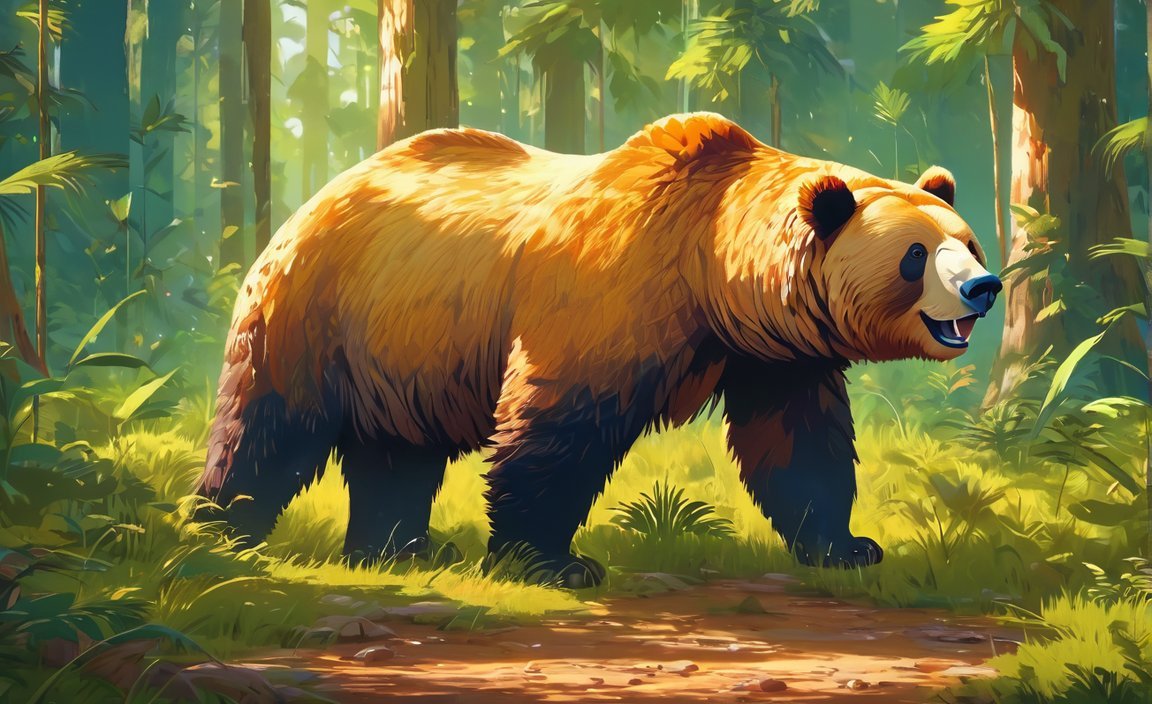
The alarming trend of animal extinction resulting from deforestation is a significant concern that demands our attention. Over the years, numerous species have been pushed to the brink of extinction or completely wiped out due to the destruction of their natural habitats. Let’s delve into the devastating impact deforestation has had on these animals and the urgent need for action.
Formosan Clouded Leopard: A Tragic Loss
One such species that fell victim to deforestation is the Formosan clouded leopard. Distinct from other leopards, this unique cat was declared extinct due to the destruction of its habitat caused by deforestation. The loss of this magnificent creature is a vivid example of the consequences of human actions on wildlife.
Paradise Parrot: A Song Silenced Forever
The paradise parrot, a once-thriving species, also met a tragic fate due to deforestation and the subsequent destruction of its habitat. This colorful bird, with its vibrant plumage and melodic voice, is now extinct. Its absence serves as a somber reminder of the irreversible damage caused by deforestation.
St. Helena Olive: Lost to the Forests
Native to St. Helena, the St. Helena olive bird thrived in its natural habitat until deforestation ravaged the island. The decline and eventual extinction of this unique avian species stand as a stark reminder of the impact of deforestation on delicate ecosystems.
Hawaiian Crow: A Cry for Help
The critically endangered Hawaiian crow, also known as the ʻAlalā, faces the threat of extinction due to extensive deforestation. Destruction of its native habitat has pushed this intelligent and distinctive bird closer to the edge of oblivion. The decline of the Hawaiian crow reminds us of the urgent need to protect and restore habitats affected by deforestation.
Pygmy Raccoon: Teetering on the Edge
The pygmy raccoon, with just a few mature individuals remaining, finds itself on the brink of extinction primarily due to the devastating effects of deforestation. These small, elusive creatures are vanishing before our eyes, underscoring the urgency of addressing the root causes of habitat destruction.
Darwin’s Fox: Fading into the Shadows
Darwin’s fox, with a fragile population of less than 649 individuals, teeters on the edge of existence due to deforestation and habitat loss. As their forest homes are destroyed, these elusive foxes fade further into the shadows, emphasizing the critical need to protect their habitats.
Black Spider Monkeys: Vanishing from the Canopy
Black spider monkeys have experienced a significant population decline due to the rampant deforestation, particularly in areas of the Amazon rainforest. These primates, known for their agility and intelligence, are losing their habitats, pushing them towards the precipice of extinction.
Saola: The Asian Unicorn on the Brink
The saola, often referred to as the “Asian unicorn,” is critically endangered primarily as a result of habitat loss caused by deforestation. With its unique appearance and enigmatic nature, the saola serves as a poignant symbol of the irreplaceable biodiversity threatened by human activities.
Borneo Pygmy Elephants: A Battle for Survival
The Borneo pygmy elephants are not extinct yet, but they face a severe threat due to deforestation. These majestic creatures rely on their natural habitat, which is rapidly diminishing, hampering their migratory patterns and putting their future at stake. Only through concerted efforts to combat deforestation can we offer these gentle giants a fighting chance.
The devastating consequences of deforestation on animal extinction are undeniable. The loss of these species not only disrupts ecosystems but also diminishes the world’s biodiversity. Urgent action is needed to halt deforestation, restore habitats, and protect these vulnerable animals before it’s too late.
Remember, saving these animals is not just about preserving their existence; it’s about safeguarding the delicate balance of our planet and securing a better future for all living creatures. Together, we can make a difference and ensure that the devastating impact of deforestation on animal extinction becomes a tale of the past, not the present.
Here are some active internal links related to animal extinction in the Amazon rainforest:
Animal extinction in the Amazon rainforest: Discover the alarming rate of animal extinction in the Amazon rainforest and its devastating impact on the ecosystem.
Animals becoming extinct due to deforestation: Learn about the heartbreaking consequences of deforestation and how it leads to the extinction of various animal species.
Animals going extinct due to deforestation: Find out why deforestation is putting numerous animal species on the brink of extinction and what we can do to prevent it.
Animals going extinct in the Amazon rainforest: Explore the dire situation of animal extinction in the Amazon rainforest and the urgent need for conservation efforts.
Animals that have gone extinct due to deforestation: Dive into the heartbreaking stories of animal species that have already become extinct due to rampant deforestation in the Amazon rainforest.
By clicking on these links, you will gain valuable insights into the devastating effects of deforestation on animal populations and understand the urgent need for conservation measures. Act now to protect these vulnerable species before it’s too late!
The Role of Habitat Loss in the Extinction of Animal Species
Habitat loss is a critical factor contributing to the devastating extinction of numerous animal species. It is caused primarily by human activities such as deforestation, agriculture, and urbanization. As forests are cleared for logging or to make space for crops, the natural habitats of countless species are destroyed. The expansion of human settlements and infrastructure further leads to the degradation and fragmentation of habitats, intensifying the threat to species survival.
How Does Habitat Loss Impact Species?
When habitats are lost or altered, animals struggle to find essential resources like food, shelter, and breeding grounds. This disruption disrupts their ability to survive and reproduces, ultimately pushing them to the brink of extinction. Take, for example, butterflies that rely on specific plants for food. When those plants are lost to development or farming, the butterflies disappear too. Likewise, loss of habitat was a significant contributor to the extinction of dinosaurs approximately 65 million years ago.
The Consequences Beyond Species Extinction
The consequences of habitat loss extend beyond the direct impact on individual species. It disrupts the delicate balance of ecosystems, affecting the interactions between different species and their roles in maintaining biodiversity. In particular, the loss of keystone species, which play a crucial role in their respective ecosystems, can have cascading effects throughout the entire food web.
Key Takeaways:
– Habitat loss is primarily driven by deforestation, agriculture, and urbanization.
– Destruction and fragmentation of habitats disrupt the ability of species to find food, shelter, and reproduce.
– Loss of habitat is a major reason why species become endangered and ultimately face extinction.
– The consequences of habitat loss extend beyond individual species to the entire ecosystem, impacting the delicate balance of biodiversity.
Sources:, National Geographic]
The Indirect Effects of Deforestation on Animal Populations
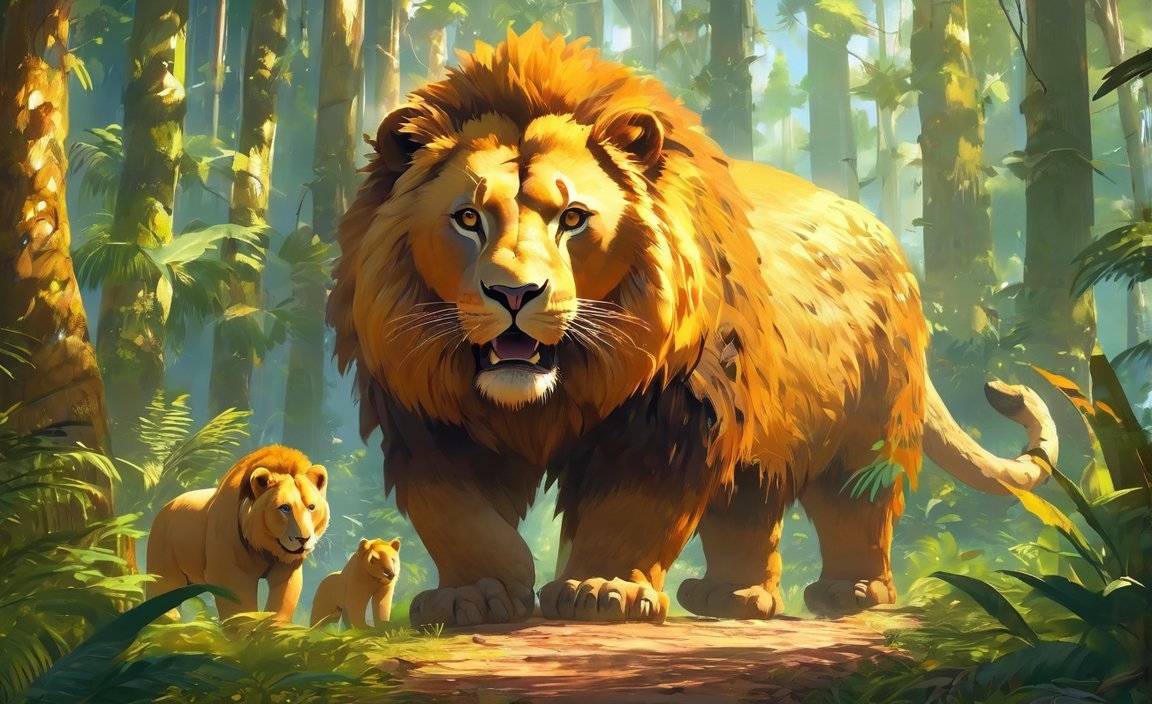
Human activities have led to widespread deforestation, causing severe consequences for wildlife and biodiversity. The indirect effects of deforestation on animal populations are alarming, resulting in habitat destruction, increased risk of predation, reduced food availability, and ultimately, species extinction. In this article, we will delve into the devastating impacts of deforestation on animal populations, shedding light on the urgent need for action to protect our ecosystems.
Habitat Destruction: A Dire Consequence
Deforestation is a major driver of habitat destruction, particularly in tropical rainforests that host a significant portion of the world’s biodiversity. As forests are cleared for various purposes such as agriculture, logging, and urbanization, the natural habitats of countless species are destroyed. This loss of habitat disrupts the delicate balance on which animals depend for their survival and reproduction. Species that once thrived in these diverse ecosystems are pushed to the brink of extinction.
Increased Risk of Predation: A Looming Threat
With the destruction of their natural habitats, animals face an increased risk of predation. As forests are fragmented and reduced in size, predators gain easier access to previously protected areas. This leads to heightened vulnerability for species that rely on dense vegetation for shelter and protection. Without adequate cover, animals become easier targets, further endangering their populations.
Reduced Food Availability: A Struggle for Survival
Deforestation also results in reduced food availability for animals. Many species rely on specific food sources found only in their native habitats. When these habitats are destroyed, the loss of crucial food resources can lead to malnutrition and population decline. For example, the destruction of forests in Sumatra and Borneo for palm oil production has severely impacted orangutan populations, as their primary food source, the fruit of oil palm trees, disappears.
Declining Biodiversity: A Loss for All
The consequences of deforestation extend beyond the impact on individual species. The loss of habitats and subsequent decline in animal populations disrupts the delicate balance of ecosystems and leads to declining biodiversity. Rainforests, estimated to be home to 50% of life on land, are witnessing the loss of countless amphibious species, bird species, and mammal species. This loss of biodiversity threatens the stability and resilience of ecosystems, impacting all organisms, including humans, that rely on these ecosystems for their well-being.
Key Takeaways:
- Deforestation has indirect effects on animal populations such as habitat destruction, increased risk of predation, reduced food availability, and declining biodiversity.
- Rainforests, home to a significant portion of the world’s biodiversity, are particularly vulnerable to deforestation.
- Habitat destruction disrupts the delicate balance of ecosystems, leading to the decline of species and threatening biodiversity.
- Animals face increased vulnerability to predation due to the fragmentation and reduction of their natural habitats.
- The destruction of forests results in reduced food availability for many animal species, leading to malnutrition and population decline.
Sources:
– Stand For Trees: Deforestation Effects
– The Humane League: Effects of Deforestation
Conservation Efforts and Solutions to Mitigate the Impact of Deforestation on Animal Extinction
Deforestation is wreaking havoc on the world’s ecosystems, leading to the extinction of countless animal species. With habitats destroyed and populations dwindling, urgent action is needed to mitigate this devastating impact. In this article, we will explore a range of conservation efforts and solutions that can help to combat the alarming trend of animal extinction resulting from deforestation.
Preserving Forests Through Individual Actions
Individuals can play a crucial role in saving forests by making informed daily choices. By consuming less, avoiding single-use packaging, eating sustainable food, and choosing recycled or responsibly-produced wood products, we can all contribute to the movement to protect forests. Small actions make a significant difference, and collectively, they can lead to positive change.
The Power of Corporations
Corporations have the power both to destroy and to help save forests. Implementing “zero deforestation” policies can have a positive impact on forest conservation. By using sustainable practices and opting for responsibly-sourced materials, companies can contribute to preserving habitats and preventing further animal extinction.
Respecting Indigenous Peoples’ Rights
Indigenous Peoples have inhabited forests for thousands of years, and their rights to traditional lands must be respected and protected. Evidence shows that when Indigenous Peoples’ rights are upheld, deforestation rates decrease. By supporting and empowering Indigenous communities, we can safeguard forests and the diverse wildlife they harbor.
Government Action as a Game-Changer
Governments play a crucial role in combating deforestation. World leaders need to embrace ambitious domestic and international policies to halt deforestation effectively. By implementing and enforcing regulations that prioritize forest protection, governments can provide the necessary framework for conservation efforts to flourish.
Strategies to Reduce Deforestation
According to Greentumble, there are 15 strategies that individuals and communities can adopt to reduce deforestation:
- Plant a tree.
- Use less paper.
- Recycle paper and cardboard.
- Use recycled products.
- Buy only sustainable wood products.
- Avoid purchasing products containing palm oil.
- Support organizations working to stop deforestation.
- Choose eco-friendly alternatives to wood, such as bamboo.
- Consume less meat, as animal agriculture is a leading cause of deforestation.
- Reduce energy consumption to decrease the demand for fossil fuel extraction.
- Advocate for stronger forest protection policies.
- Support Indigenous Peoples’ rights and land rights.
- Engage in sustainable farming practices.
- Raise awareness about deforestation and its impacts.
- Support reforestation efforts and restoration projects.
By adopting these strategies, we can all contribute to preventing further deforestation and saving the habitats of endangered species.
Key Takeaways:
- Individuals can make a difference in saving forests through informed daily choices.
- Corporations have the power to implement “zero deforestation” policies and contribute to forest conservation.
- Respecting and protecting the rights of Indigenous Peoples can reduce deforestation rates.
- Government action is crucial in effectively combating deforestation.
- Strategies such as planting trees, using less paper, and supporting sustainable products can help mitigate deforestation.
Sources:
– Greenpeace USA: Solutions to Deforestation
– Greentumble: 15 Strategies to Reduce Deforestation
FAQ
Q1: What are some notable animal species that have gone extinct due to deforestation?
A1: Some notable animal species that have gone extinct due to deforestation include the Formosan Clouded Leopard, Paradise Parrot, St. Helena Olive, Hawaiian Crow, Pygmy Raccoon, Darwin’s Fox, Black Spider Monkeys, Saola, and Borneo Pygmy Elephants.
Q2: How does deforestation contribute to animal extinction?
A2: Deforestation contributes to animal extinction by destroying their natural habitats, leading to loss of food sources, shelter, and disrupting their ability to reproduce. When animals lose their habitats, they become more vulnerable to predation, reduced food availability, and other negative impacts that can eventually lead to their extinction.
Q3: What are the primary human activities causing habitat loss and deforestation?
A3: The primary human activities causing habitat loss and deforestation include logging for timber, clearing forests for agriculture and livestock farming, urbanization and infrastructure development, and industrial expansion. These activities result in the destruction and fragmentation of habitats, directly impacting the survival of numerous animal species.
Q4: How does habitat loss affect biodiversity and ecosystems?
A4: Habitat loss disrupts the delicate balance of ecosystems and has detrimental effects on biodiversity. It not only leads to the extinction of species but also affects the interactions between different species and their roles in maintaining biodiversity. The loss of keystone species, in particular, can have cascading effects throughout the entire food web, further impacting the stability of ecosystems.
Q5: How can individuals and organizations help reduce deforestation and protect animal species?
A5: Individuals and organizations can help reduce deforestation and protect animal species by consuming less, choosing sustainable and recycled products, supporting companies with “zero deforestation” policies, advocating for stronger forest protection policies, supporting indigenous peoples’ rights and land rights, engaging in sustainable farming practices, raising awareness about deforestation and its impacts, and supporting reforestation and restoration projects.
- Star Ring Trends: Etsy vs Amazon - March 28, 2025
- Boost Pollinator Habitats: Baby Blue Eyes Sustainable Farming Guide - March 28, 2025
- Protect Big Black Bears: Effective Conservation Strategies - March 28, 2025
